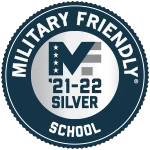Download a Free
UW Flexible Option Info Kit
Overview
Earn the IT degree you need to stay competitive in a changing workplace.
You have been working in IT and have not had time to finish your degree. You have thought about earning your bachelor’s degree to stay competitive at work, but have struggled to find a respected online IT degree program that fits your life rather than forcing you to change your life to earn your degree.
Now, here is a chance to earn a bachelor’s degree.
The UW-Milwaukee School of Information Studies Bachelor of Science in Information Science and Technology —offered in the UW Flexible Option—is designed to help you achieve your goals, on your schedule, and on your budget. As a competency-based program, you will build on your existing IT knowledge and skills.
The Bachelor of Science in Information Science and Technology (IST) combines core IT skills like front-end web design, programming, and project management, with electives that you choose. Offered by the UW-Milwaukee School of Information Studies (SOIS), the unique curriculum of this accredited degree will make sure you are learning the skills employers are looking for.
As a result, earning this bachelor’s degree will position you for career growth and set you apart from the competition. For example, our graduates have advanced their careers as Web Developers, Systems Administrators, Security Analysts, Database Administrators, in IT Support Services roles, and more. Additionally, many more have used this degree to grow into leadership positions.
Benefits of a Competency-Based IT Program
The UW Flexible Option is designed for self-motivated students who didn’t have time for a traditional college experience. This is because the competency-based format of the UW Flexible Option puts you in control of earning your degree. The program works well for students who are balancing work and family responsibilities. Furthermore, you will build on the knowledge and skills you already to advance more quickly through the program.
- Start any month, and enroll in a 12-week term (we call them ‘subscription periods’)
- Benefit from no live log-on times, and take breaks when you need
- Take as many or as few courses at a time as you want
- No deadlines, group work, or class discussions
- Completely online—work where, and when, you choose
Who Should Enroll?
“My bachelor’s degree in IST has opened the doors to software and web development projects I would have otherwise not qualified for.” – Tyler Coady, 2017 graduate
The UW Flexible Option has helped many IT professionals—like you—achieve their goal of earning a bachelor’s degree. The innovative features of our competency-based approach honor your existing experience while giving you the tools you need to master the content that’s new to you.
The unique features of the UW Flexible Option mean this style of learning may not be the best for everyone. Generally, our most successful students are those who are:
- Motivated, disciplined self-starters
- Comfortable holding themselves accountable to a self-set schedule
- Capable of thriving in an independent learning environment
About the UW-Milwaukee School of Information Studies
SOIS is a leading and collaborative school, advancing knowledge and preparing students from diverse backgrounds to be successful information professionals within their communities. SOIS continues to be an innovation leader in education—the IST program has been offered on-site and online since 2003. This degree is taught and designed by a mix of faculty and IT professionals. Especially unique is that students can personalize and custom-design their degree plans based on transfer credits and elective credits to maximize their career options.
Accreditation
University of Wisconsin-Milwaukee is accredited by the Higher Learning Commission of the North Central Association of Colleges & Schools.
Curriculum
Gain IT skills that you can apply right away in your career.
You will study things like front-end web design, database management, information architecture, human-computer interaction, information organization, storage and retrieval, and applications of the Internet. The IST program prepares graduates to be IT leaders in our increasingly digital culture and economy. Our students work with our Career Services Advisor to help identify opportunities to apply this degree to your career.
Program Learning Outcomes
Graduates of the Bachelor of Science in Information Science and Technology (IST) program will be able to:
- Analyze complex information and technology needs, and to apply principles of information science and other relevant disciplines to identify and implement solutions.
- Design, implement, evaluate, and administer information systems to meet a given set of requirements – including user and organizational needs — in diverse environments.
- Communicate effectively in a variety of professional contexts.
- Function effectively as a member or leader of a team engaged in the design, implementation, and evaluation information technology solutions.
- Recognize organizational and social responsibilities as information professionals and make informed judgments based on legal and ethical principles
Program Curriculum & Skills
The IST program teaches a variety of skills and competencies necessary for today’s IT professionals. The bachelor’s degree is 120 credits, divided into five areas:
- General education courses [21 credits]
- IST (major) core [27 credits]
- IST upper division electives [15 credits]
- IST cross-functional electives [15 credits]
- General elective requirements [42 credits]
The specific courses that you’ll need to take may vary based on your transfer credits, goals, and degree plan. Below are the skills that you will learn across your IST program level courses. You will need to ensure you satisfy the requirements to earn a bachelor’s degree from UW-Milwaukee.
Data Science | 3 Credits
| Number | Title | Credits |
|---|---|---|
| INFOST 370X | Data Analysis & Visualization for the Information Professional | 3 |
Data Visualization | 3 Credits
| Number | Title | Credits |
|---|---|---|
| INFOST 370X | Data Analysis & Visualization for the Information Professional | 3 |
Database Management (SQL) | 3 Credits
| Number | Title | Credits |
|---|---|---|
| INFOST 410X | Database Information Retrieval Systems | 3 |
Ethics in Information Technology | 3 Credits
| Number | Title | Credits |
|---|---|---|
| INFOST 120X | Ethical Issues in Information Technology | 3 |
Information Technology & Society | 3 Credits
| Number | Title | Credits |
|---|---|---|
| INFOST 110X | Introduction to Information Science & Technology | 3 |
Network & Systems Administration | 3 Credits
| Number | Title | Credits |
|---|---|---|
| INFOST 250X | Introduction to Network and Systems Administration | 3 |
Problem Solving | 3 Credits
| Number | Title | Credits |
|---|---|---|
| INFOST 315X | Knowledge Organization for Information Science & Technology | 3 |
Programming (Python & PHP) | 6 Credits
| Number | Title | Credits |
|---|---|---|
| INFOST 440X | Web Application Development | 3 |
| INFOST 350X | Introduction to Application Development | 3 |
Project Management | 3 Credits
| Number | Title | Credits |
|---|---|---|
| INFOST 290x | Project Teams, Leadership, and Communication | 3 |
| INFOST 490X | Senior Capstone | 3 |
Research Skills | 3 Credits
| Number | Title | Credits |
|---|---|---|
| INFOST 330X | Electronic Information Retrieval Systems | 3 |
Systems Analysis | 3 Credits
| Number | Title | Credits |
|---|---|---|
| INFOST 340X | Introduction to Systems Analysis | 3 |
Technical Communications | 3 Credits
| Number | Title | Credits |
|---|---|---|
| ENGLISH 206x | Introduction to Business & Technical Communications | 3 |
User Interaction Design | 6 Credits
| Number | Title | Credits |
|---|---|---|
| INFOST 691x | Content Management Systems | 3 |
| INFOST 310X | Human Factors in Information Seeking and Use | 3 |
Web Design | 9 Credits
| Number | Title | Credits |
|---|---|---|
| INFOST 240X | Web Design I | 3 |
| INFOST 320X | Web Design II | 3 |
| INFOST 375X | Multimedia Web Design | 3 |
Sample Academic Plans of Study
Faculty have developed sample academic plans of study to assist you in developing your own academic plan to complete the IST bachelor’s degree. This page will also help you better understand how long it might take you to finish your degree, and at what total cost.
Program Certificate
Certificates are great ways to diversify your academic experience, and they signal to employers you have an additional set of skills above and beyond your degree. Depending on your unique academic plan of study, you may be able to supplement your bachelor’s degree with a UW-Milwaukee certificate as part of your enrollment in the UW Flexible Option. You may choose to earn the following certificate. Please consult with your Success Coach to learn more about how it might fit in your academic plan.
Faculty
In this program, your coursework is designed by expert UW-Milwaukee faculty. Check out our faculty directory to learn more about the School of Information Studies faculty team.
Tuition

The UW Flexible Option offers working adults—like you—a more affordable way to finish a degree. Your coursework takes place in subscription periods, rather than semesters. These subscription periods start every single month, and are approximately 12 weeks long.
Instead of paying based on your course or credit load, you choose between two flat rate tuition plans. Our unique subscription period structure and flat-rate tuition model means you are in control of both your schedule and your cost. Financial Aid and the Aspire Scholarship are available for this program. We also encourage speaking with your employer about workplace tuition assistance.
- All-You-Can-Learn Option: For a flat tuition rate of $2,250 you can enroll in as many courses as you have time for. You can add additional courses in your subscription period if you finish others early.
- Single Course Option: Choose to focus on only one course at a time. The tuition for this option is $1,125. In this option, you may not add additional courses during your subscription period if you finish the first one early. You must wait until your next subscription period to add additional courses.
| Subscription Option | Courses you can take | Tuition |
| All-You-Can-Learn | 2 or more | $2,250 |
| Single Option | 1 | $1,125 |
You can switch back and forth between these tuition options with each new subscription period. For example, perhaps over the summer you do the Single Course option because your family is home on summer break, but once the kids go back to school in the fall you switch to the All-You-Can-Learn option.
Are there any additional fees? There are no segregated fees with this program, which saves you hundreds of dollars per credit hour. However, your tuition does not include the cost of textbooks or other special materials that may be required for individual courses.
Admission
Finishing your degree is closer than you think! Schedule an advising call at 608-800-6762, or contact us at flex@uwex.wisconsin.edu.
Admissions Requirements
Candidates for the Bachelor of Science in Information Science & Technology (IST) must have earned a minimum cumulative GPA of 2.00 from all prior accredited colleges and universities. For those with no previous college credit, a high school diploma, GED, or High School Equivalency Diploma (HSED) is required.
- Applicants who do not meet these academic requirements may be considered for admissions to the Associate of Arts & Sciences (AAS) degree program.
- Applicants admitted to the AAS degree may consider a program change once bachelor’s admission requirements have been satisfied (60 credits) or after the AAS degree is earned.
Application Steps
Start this program any month of the year. You may apply up to five months in advance of your desired start date.
If previously enrolled in a UW Flexible Option program, please review our returning student admissions process.
Transfer Credit Evaluations
Transfer credit will be awarded from degree-granting colleges or universities with institutional accreditation from an accrediting organization recognized by the Council for Higher Education Accreditation (CHEA). Non-CHEA approved institutional accreditors recognized by the Department of Education will be considered on a case-by-case basis and transfer credit allowed if appropriate based on the quality, comparability, and applicability of the coursework. Schools with programmatic accreditation may be evaluated for transfer if the accreditor is recognized by CHEA and the relevant coursework falls within the accreditor’s area of specialization.
- Transfer credit is awarded for college-level coursework completed at regionally accredited institutions. See Transfer Credit Evaluations for more information.
- Learn more about how credit by exam and military coursework may apply towards your degree.
Still have questions? Check out our Admission FAQ page.







